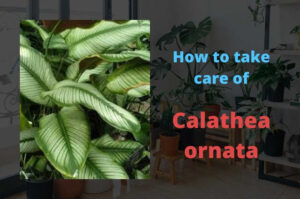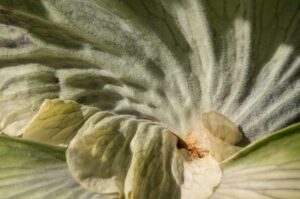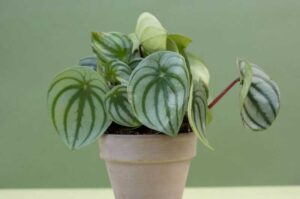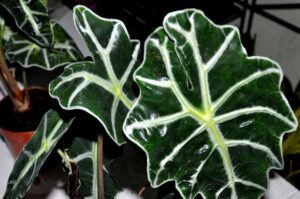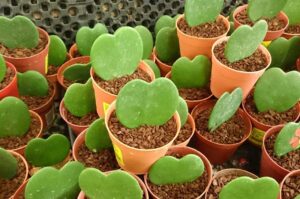Why Is My Gardenia Not Flowering? (Causes and Solutions)
A Gardenia bloom is stunning to look at, and the smell is equally delightful. Beautifully grown Gardenia flowers entice passers-by to stay longer in the garden. This exotic plant, however, may sometimes behave unnaturally and do not show any flowering. In this article, we are going to discuss all the issues for which your Gardenia is not flowering, and how to fix them.
The most common reasons for which your Gardenia is not flowering are overwatering, underwatering, late pruning, and poor lighting conditions. Apart from these issues, other causes that contribute to the problem of lack of blooming are low humidity levels, insect pest attacks, and improper fertilizer application. These issues often cause bud drop and hard blossom formation in Gardenias.
Gardenia plants may be difficult to care for, but with adequate information, these fussy plants can be easily grown. That is exactly what we will be discussing in this post today. We will be checking from how to cultivate Gardenias to how to solve common Gardenia problems. So, without further ado let’s get started:
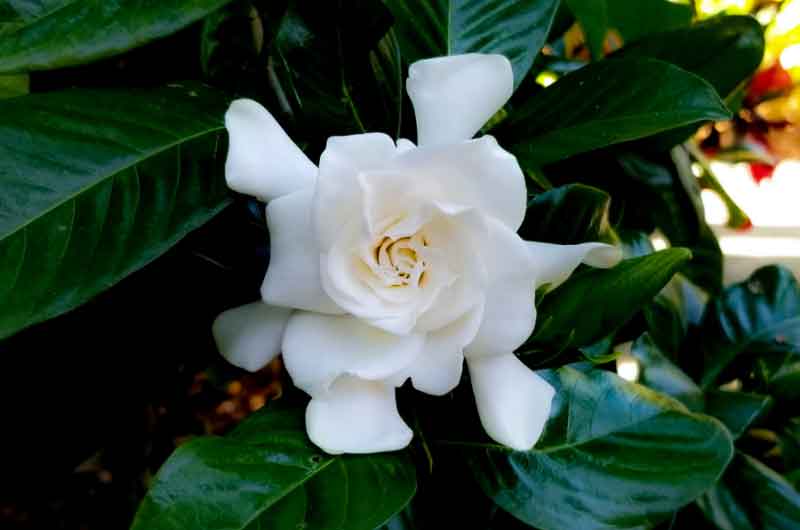
Causes for which your Gardenia is not flowering
Extreme Temperatures
For Gardenia flowers to bloom best, the temperature has to be warm but not scorching during the daytime. While in the night time temperature has to be chilly.
Whether too hot or too cold, extremes in temperature can inhibit flowering or cause buds to fall off.
What is the ideal temperature for Gardenias?
To obtain the ideal flowering for your Gardenias, the optimal temperatures during the daytime should be between 65 to 70o F (18-21o C). At night the temperature should fall between 60 to 63o F (15-17o C).
If the temperature goes beyond 70 degrees throughout the day and night, then Gardenias will not set buds and may shed existing buds.
Wrong Watering habits
Gardenias like soil that is continuously wet but not soggy. They need approximately an inch of rain or equal irrigation to thrive.
Your Gardenia plant can either suffocate or dry out easily if there is too much or too little moisture in the soil. It is easy to overwater your Gardenia, and it’s tough to comprehend them when they’re submerged.
Let’s talk about the two common watering problems-
Overwatering
Gardenias require soggy soil but overwatering causes root damage leading to fungal infection. Overwatering leading to a waterlogged condition causes clogging of pores in the potting soil, which will create an anaerobic condition in the crop root zone.
Anaerobic condition (lack of Oxygen) is not an ideal condition for plant roots, because in this situation they can not respire properly and hence hampers their normal functions.
Due to inadequate drainage and prolonged waterlogging conditions, Gardenias will turn mushy, black, or brown over time, resulting in no flowering.
Gardenia has shallow roots, which makes root rot one of the biggest problems for not flowering. Gardenia’s roots do not get sufficient oxygen to perform their functions properly.
Underwatering
Watering is the ultimate necessity for the growth of flowers. Due to underwatering Gardenia will shed numerous flower buds before flower opening. Directing scarce water to roots will dehydrate the plant.
How often should Gardenias be watered?
Gardenias require at least an inch of water per week and should be watered every week.
The idea is to keep the soil moist. Neither it should be waterlogged, nor completely dry.
You can also use a moisture meter to get a brief idea about the soil moisture condition of your potting soil.
How to prevent Underwatering in Gardenia?
- Check the soil moisture levels regularly (you can use a soil moisture meter for this purpose), go for irrigation when the potting soil is dried completely.
- Spray water on the leaves of the Gardenia plant to keep it wet, but cease doing so after the plant is fully bloomed.
- A humid environment can keep your plant free from water stress conditions.
- Also, prevent exposure to direct sunlight, because, the potting soil will eventually dry out quickly if it is exposed to the bright and hot direct sunlight.
- Also, you can use a self-watering pot for your Gardenia plant. You can make it at your home, or get one from the garden stores, or order online.
You will also like this article- Complete working principle of Self-watering pots
Low humidity level
Gardenias thrive well under consistent, warm, and humid climates. Winter’s dry and short days will be the most challenging, especially if the Gardenia shrub does not receive adequate humidity.
The blossoms will begin to fall off the shrub fast if the air is too dry. Bud’s droop and blooming fails are the primary examples of lack of humidity.
Should I mist my Gardenia?
Yes, you should definitely mist your Gardenia plant.
The humidity around the plant may be increased by spraying it with a spray bottle regularly. Misting the Gardenia does increase the humidity around the plant.
But it is not a permanent method to keep the environment humid.
How to maintain a humid environment for Gardenias?
To maintain a humid environment, place the container on a bed of clay pebbles or gravel and fill the area between them with water. This to some extent replicates the wetness in the plant’s natural habitat. To know more about Pebble tray you can check out this video: https://youtu.be/YauDIfDXe9A
You can also try grouping your house plants. It will help to keep the atmosphere humid due to the water vapors released by the plants as a result of transpiration.
You can also use a humidifier to keep the atmosphere humid.
Poor lighting condition
Gardenia bush care also entails ensuring that the plant receives adequate sunshine.
A sunny position with some cover during the warmest part of the day is ideal for an outdoor garden.
Place the Gardenia bushes in strong light, but not direct light, if you’re growing them inside. The summer sun may bleach the color of the leaves and cause them to burn. This will halt the plant from flowering.
What are the light requirements for Gardenia?
Gardenias planted in containers require strong, bright, and diffused sunlight. Therefore, consider providing at least 6 to 8 hours of bright indirect sunshine to your indoor Gardenias through a sunny window.
When grown outdoors, Gardenias will do extremely well in full sun, with some shade in the hottest part of the day.
Due to Bud drop and Hard Blooms
Occasionally, a Gardenia that appears to be in good health can shed all or most of its developing flower buds shortly before they open. A variety of environmental and cultural variables can cause bud drop and stop flowers to bloom.
Whether in the form of low humidity, overwatering, or underwatering, these are the frequent reasons for bud drop. Insufficient light and high night temperatures during flower growth are some causes of hard blooms. Unfortunately, gardeners have little control over this cause of flower loss.
How to prevent Bud drop in Gardenia?
To avoid the problem of bud drop, keep the soil equally moist but not soggy, as Gardenias don’t enjoy damp feet. The application of mulches to retain soil moisture may help to prevent bud drops. Overwatering should be completely avoided.
Also maintaining a proper humid condition can prevent the issue of bud drop in your Gardenia plant.
How to prevent Hard blooms in Gardenia?
Selective pruning is required to prevent hard bloom. Adjustment of trees may be sufficient to restore light conditions to allow flowering in some situations.
Late pruning
Gardenias usually don’t require much pruning but it is essential for gorgeous flowering.
Pruning too late in the season is typically the cause of a Gardenia plant’s failure to bloom. Late pruning in the particular season might remove buds that form for the next season.
When should I prune my Gardenia?
Gardenia plants should be pruned after they have finished blooming in the summer. Always prune before plants have time to establish new buds. Gardenias establish their bloom buds for the next year from the previous fall season.
So, pruning in the summer season allows removing some of the older wood without removing the freshly set buds.
How to prune Gardenias?
Gardenia branches should always be trimmed or pruned immediately above a node, which is where a leaf is connected to the stem. After the blooming period, softly prune your shrub to keep its tight, compact shape while decreasing the branches by 13%. That is cutting the branches by 1/3rd.
CLICK HERE to get step by step guide on how to prune Gardenias.
Lack of an ideal potting soil
Gardenias prefer nutrient-rich acidic soil that is moist yet well-drained. Gardenia will stop flowering if it is not planted in a proper proportion of soil mix. As the plant gets its nutrients from the soil which has proper aeration and nourishments.
Gardenias have shallow root systems, so don’t cultivate once they’ve established themselves.
You may also like this article- A step by step guide on how to make potting soil for indoor plants.
Lack of nutrients(fertilizers)
Gardenias require fertilizer regularly to achieve optimal growth and bloom output.
Fertilizers should be applied to these plants with caution. Salts deposit in the roots of Gardenias as a result of excessive fertilizer application.
This excess salt build-up dehydrates the roots resulting in restricted bloom development.
How often should I fertilize my Gardenia?
A Gardenia shrub requires a lot of food to bloom. Gardenias should be fertilized every two weeks using a standard water-soluble fertilizer solution. This ensures proper maintenance and feeding.
Fertilize your Gardenia with an acid-based fertilizer once every three to four months. Gardenias should be sparingly fertilized in the spring after the risk of frost has gone. Then, in late June, fertilize your plants once more. Another alternative is to fertilize with a half-dose more regularly.
Pest attacks and diseases
When a Gardenia refuses to blossom, it might be due to a significant insect infestation. Spider mites, aphids, scale, and mealybugs are all known to attack Gardenias. But the most commons are:
Aphids: These are soft, little insects that congregate beneath the Gardenia leaves and around fresh growth. They harm the plant by sucking its sap, and in severe situations, they can even kill it. Thus, stopping the flowers to grow.
Whiteflies: These produce damage that is comparable to that caused by aphids. Plants that have been infected grow stunted, their leaves become yellow, and they finally die. Honeydew is also excreted by these insects, which promotes the growth of sooty mold fungus, killing all the fresh buds.
Mildew with a powdery appearance is the common disease visible in Gardenia. Powdery mildew causes a white, fuzzy, or powdery covering on the leaves of Gardenias, and distorts any new growth of flowers. This illness is caused by inadequate air circulation, which causes dampness to build up around the plants. Thus, allowing mildew spores to germinate.
How to prevent pest attacks?
To keep aphids at bay, use insecticides around your Gardenias regularly or neem oil. To keep whiteflies away from your Gardenias, use insecticidal soap sprays.
Thin out the plants to improve air circulation or move your potted Gardenia plants away from other plants. This helps in building control over powdery mildew in Gardenias. Powdery mildew can also be effectively controlled with the use of neem oil.
How do I get my Gardenia to bloom?
If you want your Gardenia plant to grow healthier and stronger flowers, then these are some other most important solutions. When dealing with Gardenia plants, there are a couple of things to bear in mind:
- Try to avoid planting Gardenia in a cold region. For the beautiful cluster of flowers maintain the ideal temperature. If you live in a cold climatic region, you may grow your Gardenias indoors to avoid frost damage. Always try to keep Gardenia away from any air conditioning or heating vents that have a temperature variation.
- As Gardenias don’t like hard water, it’s better to water them with rainwater or bottled mineral water. During flowering, avoid getting the petals wet, since this can create flaws or discoloration on the blooms. Mulch should be applied at least 2 to 4 inches thick to keep weeds at bay and to keep the soil wet.
- To provide moisture to dry indoor air, a humidifier is useful.
- Gardenias thrive in a west-facing window when grown inside. In the case of outdoor Gardenias should be planted in mild shade, ideally away from direct sunshine in the afternoon. Gardenias require enough air movement, so don’t plant them too close together.
- Make sure that the flowering plant has finished its blooming cycle before pruning. To avoid damaging the stem, use sharp, sterilized pruning shears or scissors. Gardenias should be handled with care while being cut for flower arrangements or corsages. Gardenia blooms are prone to bruises. It’s important not to touch the flower. Remove the bloom below the calyx or leafy, deep green root by cutting it. In the morning, cut flower buds, and in the afternoon, open blooms. Remove wilted flowers on a regular basis to encourage the growth of fresh blooms.
- One of the most essential aspects of successfully cultivating a Gardenia plant indoors is keeping the pH of the soil intact. It’s best to use a mix of sand and loam. Gardenias may reach a height of 4 to 6 feet and a width of 3 to 4 feet when grown outdoors. The pH level of the soil should be between 5.0 and 6.0. You can use a pH meter or litmus paper strip to test the pH level of your potting soil. To increase drainage and plant development, add lots of manure or organic matter like peat moss to the soil.
- Before and after fertilizing, make sure the soil is wet. Gardenia should have a balanced fertilizer with a nitrogen, phosphate, and potassium ratio of 20-20-20. If you want to overwinter your Gardenias outside, don’t fertilize them in the autumn. As new growth may be destroyed if temperature dips below 15 degrees F. Apply an acidic, slow-release fertilizer to your shrubs, such as azalea or camellia fertilizer. Blood meal, fish emulsion, and bone meal are all good options for organic gardeners.
- To get your Gardenias to blossom, keep them in complete darkness for 14 hours each night. Gardenias are sensitive to environmental changes, so take care to manage other elements like temperature and humidity.
Conclusion
Examining each possible cause one at a time is the simplest way to discover out why your Gardenia isn’t flowering.
To improve your plant’s growth environment, take the above appropriate steps. All you have to do is be more cautious, attentive, and compassionate toward these natural wonders.
Put everything you’ve learned about Gardenias to good use and enjoy the beauty and pleasant smell that comes with the effort. You’ll also be able to watch nature’s beauty bloom right before your eyes outside as well as inside.

